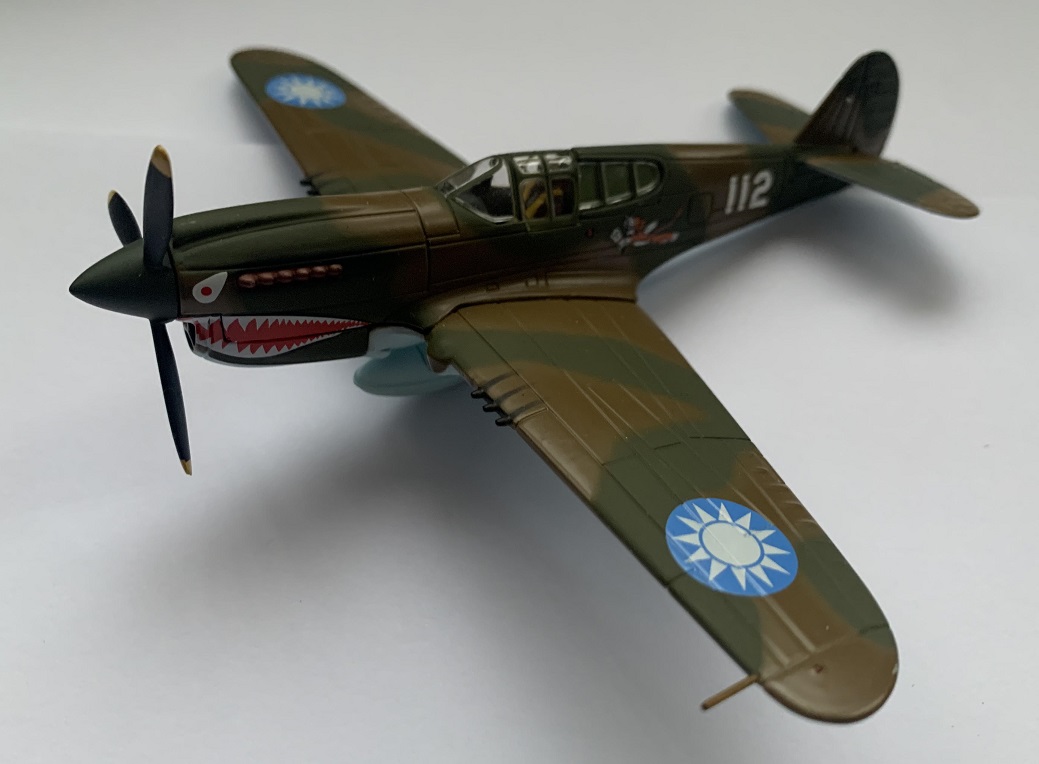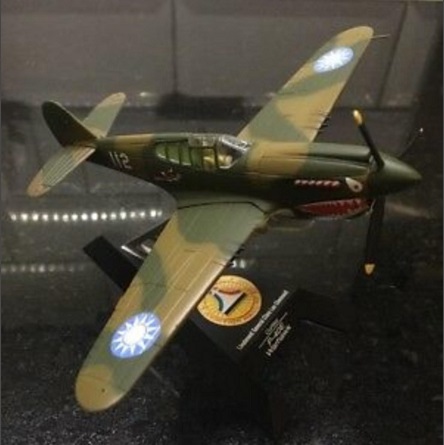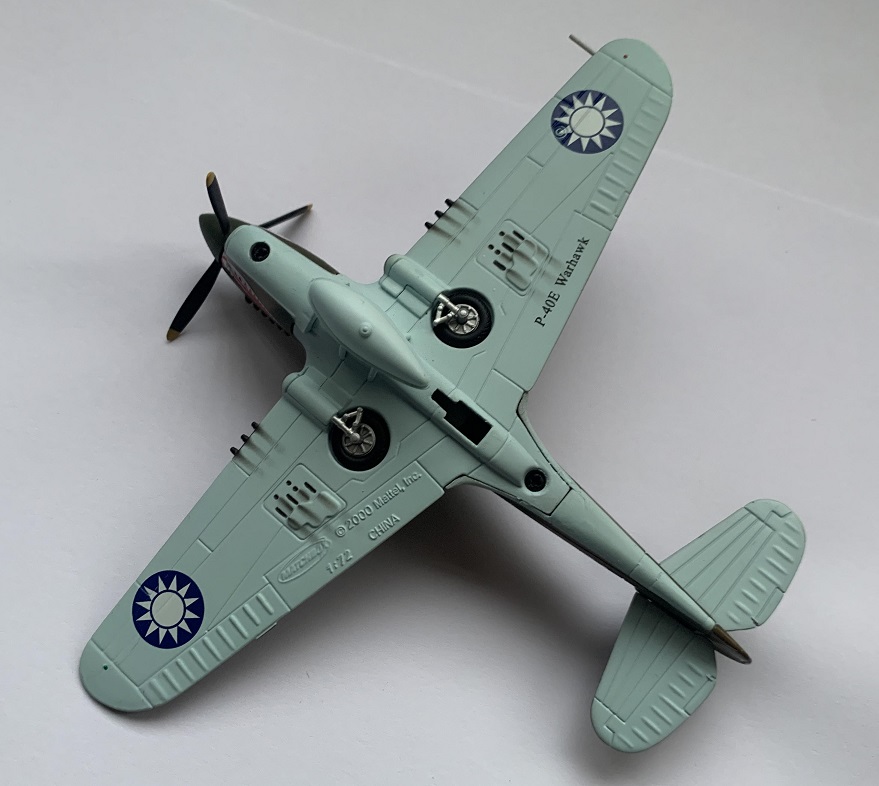2 in stock
£24.99
2 in stock
Matchbox 1/72 scale 91059-0718: Curtiss P-40E Warhawk, White 112 of American Volunteer Group (AVG) Flying Tigers, Lee Chennault, China 1942. With superb looking battle scarred paintwork and fixed raised undercarriage on a display stand.
Length 5.5 inches Wingspan 6.25 inches
PLEASE NOTE: Boxes are not perfect with the odd light scuff and crease. Models are new.
The First American Volunteer Group (AVG) of the Chinese Air Force in 1941–1942, nicknamed the Flying Tigers, was composed of pilots from the United States Army Air Corps (USAAC), Navy (USN), and Marine Corps (USMC), recruited under President Franklin Roosevelt’s authority before Pearl Harbor and commanded by Claire Lee Chennault. The aircraft were to fly with Chinese colours but be under American control. The mission was to bomb Japan and defend China but many delays meant they flew in combat after the US and Japan declared war.
The group consisted of three fighter squadrons of around 30 aircraft each. It trained in Burma before the American entry into World War II to defend China against Japanese forces. The group of volunteers were officially members of the Chinese Air Force. The members of the group had contracts with salaries ranging from $250 a month for a mechanic to $750 for a squadron commander, roughly three times what they had been making in the U.S. forces. While it accepted some civilian volunteers for its headquarters and ground crew, the AVG recruited most of its staff from the U.S. military.
The group first saw combat on 20 December 1941, 12 days after Pearl Harbor (local time). It demonstrated innovative tactical victories when the news in the U.S. was filled with little more than stories of defeat at the hands of the Japanese forces and achieved such notable success during the lowest period of the war for both the U.S. and the Allied Forces as to give hope to America that it might eventually defeat Japan. AVG pilots earned official credit and received combat bonuses for destroying 296 enemy aircraft, while losing only 14 pilots in combat. The combat records of the AVG still exist and researchers have found them credible. On 4th July 1942 the AVG was disbanded and replaced by the 23rd Fighter Group of the United States Army Air Forces, which was later absorbed into the U.S. Fourteenth Air Force with General Chennault as commander. The 23rd FG went on to achieve similar combat success, while retaining the nose art on the left-over P-40s
The Curtiss P-40 was an American single-engine, single-seat, all-metal fighter and ground attack aircraft that first flew in 1938. It was used by the air forces of 28 nations, including those of most Allied powers during World War II, and remained in front line service until the end of the war. By November 1944, when production of the P-40 ceased, 13,738 had been built. The P-40 design was a modification of the previous Curtiss P-36; this reduced development time and enabled a rapid entry into production and operational service. Warhawk was the name the United States Army Air Corps adopted for all models, making it the official name in the United States for all P-40s. The British Commonwealth and Soviet air forces used the name Tomahawk for models equivalent to the P-40B and P-40C, and the name Kittyhawk for models equivalent to the P-40D and all later variants. P-40s first saw combat with the British Commonwealth squadrons of the Desert Air Force (DAF) in the Middle East and North African campaigns, during June 1941. The Royal Air Force’s No. 112 Squadron was among the first to operate Tomahawks, in North Africa, and the unit was the first to feature the “shark mouth” logo, copying similar markings on some Luftwaffe Messerschmitt Bf 110 twin-engine fighters. The logo was most famously used on P-40s by the Flying Tigers in China.
Designed to meet a USAAC requirement for a pursuit aircraft, the P-40 Warhawk was first flown on October 14th, 1938. This aircraft was tough, virtually trouble-free and saw continual improvements to arms, armor and engines. The P-40 served in numerous combat areas; often outclassed by its adversaries in speed, maneuverability and rate of climb, it earned a reputation for extreme ruggedness. Its strong construction, heavy firepower, and ability to dive enabled it to compete with enemy fighters, and it was a formidable ground-attack aircraft. P-40s were also flown by the famed Flying Tigers against the Japanese in China.
| Weight | 0.7 kg |
|---|






